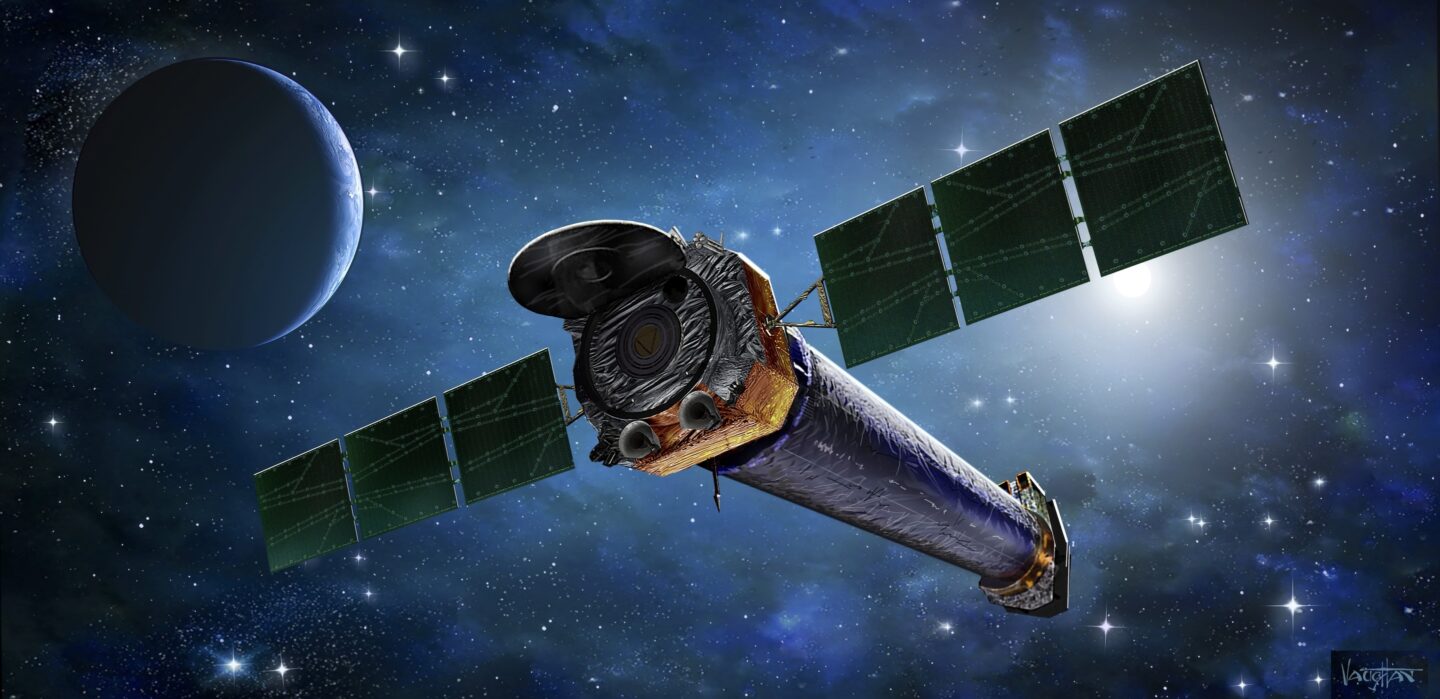Chandra X-ray Observatory

The Chandra X-ray Observatory is one of NASA’s “great observatories”, together with the Hubble Space Telescope (HST), the Spitzer Space Telescope, and the Compton Gamma ray observatory.
Chandra observes the X-ray emission that is coming from some of the hottest and brightest objects in the universe, from the flares on stars to the largest clusters of galaxies in the universe.
Today, the Chandra observatory is used by thousands of scientists from all over the world, including many researchers at MKI. However, MKI plays a different role for Chandra, too: Two of the scientific instruments on Chandra were developed and built fully or partially at MKI, and scientists and engineers at MKI continue to operate and calibrate these instruments and support other scientists with advice and software development for those instruments. This is part of MKI’s contributions to the Chandra X-ray Center. Chandra was launched July 23, 1999 on the Space Shuttle Columbia, and was the heaviest load ever brought to space on a space shuttle.

Illustration of Chandra in space.
Credit: NASA/CXC & J.Vaughan
Chandra instruments developed at MKI
The Chandra X-ray Observatory carries four main instruments: Two cameras and two sets of dispersion gratings. One of the cameras is the Advanced CCD Imaging Spectrometer (ACIS) which consists of 10 CCDs, up to six of which can be operated at the same time. Those CCDs were fabricated at MIT’s Lincoln Laboratory.
The ACIS team at MKI helped develop, test, and calibrate the ACIS instrument and continues to monitor and support operations. ACIS detects individual X-ray photons and sends the position, energy, and time for each photon to the ground. Researchers can thus use ACIS to make images of X-ray emitting objects such as supernova remnants, study the energy distribution coming from an X-ray source in the sky (spectrum), and look at how the X-ray emission changes with time (lightcurve).

The “Advanced CCD Imaging Spectrometer” (ACIS). The 10 CCDs (dark squares) are arranged in two arrays: a 2x2 square for larger field of view imaging plus a row of six for reading out the dispersion gratings.
High-Energy Transmission Grating
The other instrument developed at MKI is the High-Energy Transmission Grating (HETG). The HETG consists of 336 grating facets that were developed and manufactured at MKI’s Space Nanotechnology Laboratory. Each facet is made from a thin film of polyimide (a type of plastic) with a row of microscopic gold bars. As the X-rays pass through the gold bars they are diffracted, which means that their direction changes depending on the wavelength of the X-ray. This spreads out the X-rays like a rainbow and allows researchers to measure the wavelength of the X-rays very precisely to determine for example which specific elements in a star or supernova remnant produced the X-ray. The HETG is mounted behind Chandra’s mirrors and can be folded in and out, depending on the needs of a particular observation.

The High-energy transmission grating (HETG). The gold facets are arranged in four rings.
MKI as a partner in the Chandra X-ray Center
Today, MKI continues to work as a part of the Chandra X-ray Center. Research staff at MKI support primarily the ACIS and the HETG instruments. This support includes many different duties from planning observations, programming the instrument modes on ACIS, studying how ACIS and the HETG age in space and what can be done to operate them safely and efficiently for as long as possible, to developing software that helps researchers at MKI and other scientists to simulate and interpret data coming from Chandra. To this end, MKI researchers work closely with other members of the Chandra X-ray Center.